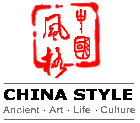Wudang Martial Arts
A major aspect of Taoist influence on Chinese culture is its martial arts. Chinese martial arts of all sorts have a long history and a great diversity of methods and styles. Generally speaking, they are divided into two big schools: the south school and the north school.
The north school originated from Shaolin Temple of Songshan Mountain, the Holy Land of Buddhism, and is called the Shaolin Sect, with its boxing called as Waijiaquan . The south school originated from Wudang Mountain , the Holy Land of Taoism, and is called the Wudang Sect, with its boxing called as Neijiaquan . Thus Wudang and Shaolin are considered as the two main sects of Chinese martial arts.
Wudang martial arts are a great contribution of Wudang Taoism, which is a famous branch of Chinese Taoism.
It is said that the father of Wudang Neijiaquan is Zhang Sanfeng, an outstanding Taoist. When practising asceticism at Wudang, he saw a fight between a pied magpie and a snake, which enlightened him a lot. Based on the postures of the two animals, he eventually created the unique Wudang boxing. It has been developed and enriched successively by the great masters over the generations, and has now grown into one of numerous schools and varieties with rich contents. Wudang boxing includes boxing varieties such as Taiji (shadowboxing), Xingyi (shadow boxing that imitates the movements of animals or birds of various kinds and integrates physical motions with concentration of the mind), and Bagua (eight-trigram boxing), weapon arts such as Taijiqiang (Taiji spear) and Taijijian ( Taiji sword), Qinggong (light skill), Yinggong (mastery skill), stunt, and various Qigong (a system of deep breathing exercises) for health.
As a main sect of Chinese martial arts, Wudang martial arts are heading for the world, and have drawn a lot of martial arts fans from outside China .


